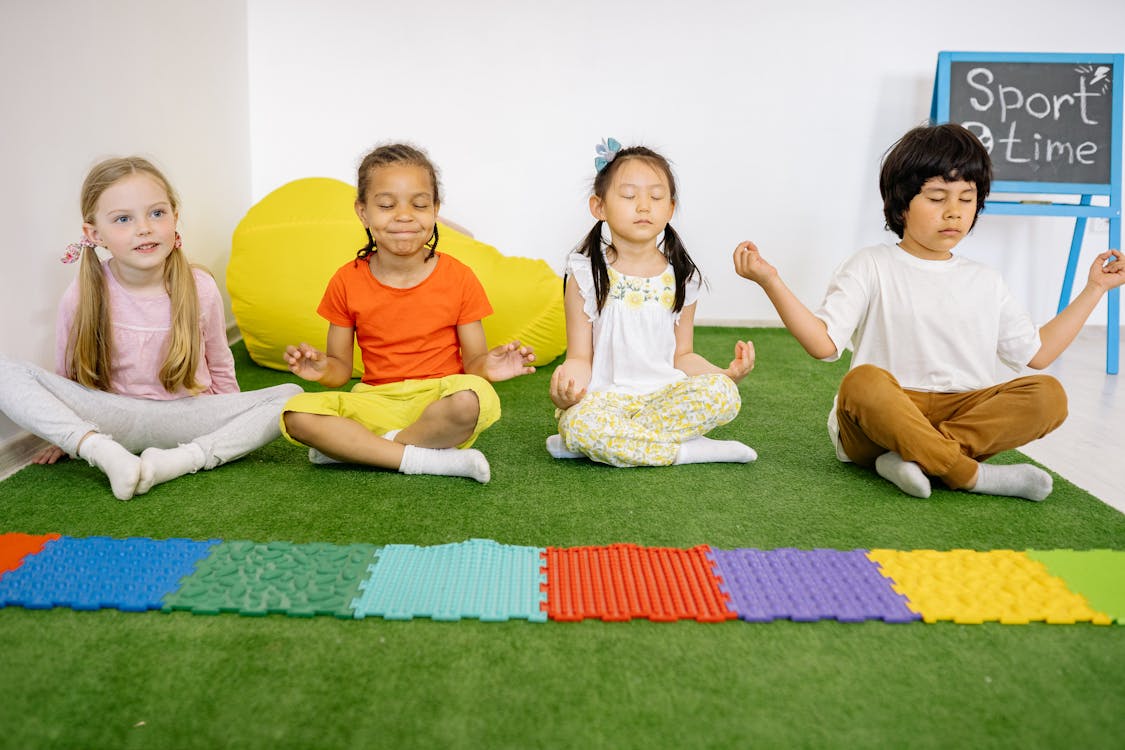Table of Contents
- Why is Parent-Teacher Collaboration So Crucial? More Than Just Report Cards
- Laying the Foundation: Building Trust and Respect
- Effective Communication Strategies: The How-To of Collaboration
- Practical Ways Parents Can Foster Collaboration
- Practical Ways Teachers Can Foster Collaboration
- Overcoming Common Challenges in Parent-Teacher Collaboration
- Conclusion: The Enduring Power of the Parent-Teacher Team
Building a Strong Parent-Teacher Relationship: The Power of Collaboration for Student Success
Imagine your child walking into school each day feeling supported, understood, and ready to learn. Picture them navigating challenges with resilience, knowing they have a united team cheering them on. This isn’t just a hopeful dream; it’s the tangible outcome of a strong parent-teacher relationship built on the bedrock of collaboration. When parents and teachers work together, they create a powerful synergy that significantly boosts a child’s educational journey, both academically and emotionally.
But let’s be honest, forging this connection isn’t always easy. Busy schedules, differing perspectives, and communication hurdles can sometimes get in the way. However, the investment in building this partnership is arguably one of the most impactful things we can do for our children’s future. It’s about moving beyond occasional updates and creating a genuine, ongoing dialogue focused on the child’s well-being and growth.
This article dives deep into the why and how of effective parent-teacher collaboration. We’ll explore the profound benefits, practical strategies for both parents and educators, ways to navigate potential challenges, and ultimately, how to build a bridge that empowers every child to reach their full potential. Ready to become part of a winning team?

Why is Parent-Teacher Collaboration So Crucial? More Than Just Report Cards
The connection between home and school is far more significant than many realize. When parents and teachers operate in silos, children can receive mixed messages, feel unsupported, or struggle to bridge the gap between their two most important worlds. Conversely, a collaborative approach creates a consistent and nurturing environment.
Impact on Student Success: The Core Benefit
Research consistently shows a strong correlation between positive parent-teacher relationships and improved student outcomes. This isn’t just about grades:
- Academic Achievement: Students whose parents and teachers collaborate often demonstrate higher grades, better test scores, and improved attitudes towards learning. They are more likely to complete homework and engage actively in class.
- Social-Emotional Growth: Collaboration fosters a sense of security and belonging for the child. It helps improve social skills, emotional regulation, and overall well-being. Knowing that the adults in their lives are communicating and working together reduces anxiety.
- Behavioral Improvements: Consistent expectations and communication between home and school can lead to better behavior, increased self-discipline, and fewer disciplinary issues.
- Attendance and Engagement: When parents are actively involved and communicating with teachers, students tend to have better attendance records and are more engaged in school activities.
Benefits for Parents: Feeling Empowered and Informed
Collaboration isn’t just good for the kids; it empowers parents too:
- Deeper Understanding: Parents gain valuable insights into the curriculum, teaching methods, and school expectations, helping them support learning more effectively at home.
- Early Problem Identification: Open communication allows potential learning or behavioral issues to be identified and addressed early, before they escalate.
- Increased Confidence: Feeling like a partner in their child’s education boosts parents’ confidence in their ability to support their child’s learning journey.
- Stronger Connection to the School Community: Collaboration helps parents feel more connected and welcomed within the school environment.
Benefits for Teachers: Gaining Holistic Insight
Teachers also reap significant rewards from strong partnerships with parents:
- Understanding the Whole Child: Parents offer invaluable insights into a child’s strengths, weaknesses, interests, learning style, and home environment, which teachers can use to tailor instruction and support.
- Reinforced Learning: When parents understand classroom goals, they can reinforce concepts and skills at home, solidifying learning.
- Improved Classroom Management: A collaborative approach often leads to better student behavior as expectations are aligned between home and school.
- Increased Job Satisfaction: Feeling supported by parents and working together towards common goals can significantly enhance a teacher’s sense of efficacy and job satisfaction.
Creating a Consistent Support System
Ultimately, parent-teacher collaboration builds a seamless support network around the child. It ensures consistency in expectations, communication, and strategies, helping the child feel secure and understood. This unified front is crucial for navigating the complexities of growing up and learning.
Laying the Foundation: Building Trust and Respect
Like any strong relationship, the parent-teacher partnership thrives on mutual trust and respect. This foundation isn’t built overnight; it requires conscious effort and consistent positive interactions from both sides.
The First Impression Matters
Initial interactions set the tone for the entire year. Whether it’s a welcome email, a back-to-school night, or an initial meet-and-greet, these early encounters are crucial.
- Teachers: Be approachable, welcoming, and clearly communicate your preferred methods of contact and excitement for the year ahead. Share a little about your teaching philosophy.
- Parents: Attend orientation events if possible. Introduce yourself positively and express your willingness to partner in your child’s education.
Open and Honest Communication: The Two-Way Street
Effective communication is the lifeblood of collaboration. It needs to flow in both directions.
- Be Proactive: Don’t wait for problems to arise. Teachers can share positive updates or general classroom news regularly. Parents can share relevant information about changes at home or observations about their child’s learning.
- Be Clear and Concise: Respect each other’s time. Get to the point, whether in an email, phone call, or meeting.
- Active Listening: Truly listen to understand the other person’s perspective. Avoid interrupting and ask clarifying questions. Validate their concerns or input.
Assuming Positive Intent
This is perhaps one of the most critical elements. Misunderstandings happen. When faced with a concern or a communication that seems off, try to assume the other person has good intentions – that both parent and teacher ultimately want what’s best for the child. Approach concerns with curiosity rather than accusation. For example, instead of saying “Why wasn’t my child helped?”, try “Can you help me understand what happened during that activity?”
Respecting Boundaries and Time
Both parents and teachers lead busy lives. Recognizing and respecting each other’s time and boundaries is essential for maintaining a positive relationship.
- Teachers: Clearly communicate your availability and preferred contact methods/times. Respond within a reasonable timeframe (e.g., 24-48 hours during the school week).
- Parents: Use the teacher’s preferred communication channels. Avoid contacting teachers late at night or on weekends unless it’s a pre-arranged agreement or an emergency. Understand that teachers have many students and responsibilities.

Effective Communication Strategies: The How-To of Collaboration
Knowing collaboration is important is one thing; knowing *how* to communicate effectively is another. Let’s break down practical strategies.
Choosing the Right Channels
Different situations call for different methods. Technology offers many options, but choose wisely:
- Email: Good for non-urgent updates, questions, sharing information, and documentation.
- Phone Calls: Better for more nuanced conversations or when a quicker back-and-forth is needed than email allows.
- School Communication Apps (e.g., ClassDojo, Remind): Often used for quick announcements, reminders, and sometimes brief messages or photo sharing. Understand the app’s intended use.
- Scheduled Meetings/Conferences: Essential for in-depth discussions about progress, concerns, or developing support plans.
- Informal Chats (Drop-off/Pick-up): Suitable for very brief, positive check-ins, but not for significant issues.
Tip: Teachers should clearly state their preferred communication methods at the beginning of the year. Parents should respect these preferences while also feeling comfortable requesting a different method (like a phone call or meeting) if the situation warrants it.
Proactive vs. Reactive Communication
Don’t let communication only happen when there’s a problem. Proactive communication builds goodwill and trust.
- Teachers: Share good news! A quick note or email about a child’s achievement, effort, or act of kindness can make a huge difference. Send out regular newsletters or updates about classroom activities.
- Parents: Share positive feedback with the teacher when you appreciate something they’ve done. Let them know if a particular strategy is working well at home.
Preparing for Parent-Teacher Conferences
Conferences are prime collaboration time. Make the most of them:
- Teachers: Prepare specific examples of student work, observations, and data. Have a clear agenda but allow flexibility. Start and end with positives. Be ready to suggest strategies and next steps.
- Parents: Jot down questions or topics you want to discuss beforehand. Think about your child’s strengths, challenges, and interests from your perspective. Come ready to listen and share insights from home. Ask: “How can I best support my child’s learning at home?”
Navigating Difficult Conversations
Addressing concerns (academic struggles, behavioral issues, social conflicts) requires sensitivity.
- Schedule a specific time to talk: Avoid trying to resolve complex issues via quick emails or hallway chats.
- Focus on the child and the issue, not personality: Use “I” statements (e.g., “I’m concerned about…”) rather than blaming language.
- Bring observations, not accusations: Share specific examples of what you’ve noticed or what the child has reported.
- Listen to understand: Acknowledge the other person’s perspective, even if you don’t fully agree.
- Collaborate on solutions: Work *together* to brainstorm strategies and agree on a plan of action and follow-up.
Leveraging School Communication Platforms
Many schools now use online portals or dedicated apps. Familiarize yourself with these tools:
- Check Regularly: Make it a habit to check portals for grades, assignments, and announcements.
- Understand Features: Know how to use the platform for messaging, accessing information, etc.
- Provide Feedback (If Appropriate): If the platform isn’t working well or is confusing, provide constructive feedback to the school.
Practical Ways Parents Can Foster Collaboration
Parental involvement is a cornerstone of a strong home-school connection. Here’s how parents can actively contribute:
Stay Informed
- Read school newsletters, emails, and classroom updates thoroughly.
- Regularly check the school website or parent portal.
- Know the teacher’s communication preferences and classroom expectations.
- Attend school events like back-to-school nights and curriculum informational sessions.
Support Learning at Home
- Create a consistent homework routine and environment.
- Show interest in what your child is learning; ask open-ended questions about their school day.
- Read with or to your child, regardless of their age.
- Help your child develop good organizational habits.
- Connect classroom learning to real-world experiences.
Share Relevant Information Proactively
- Inform the teacher about significant changes at home (e.g., new baby, move, family illness, separation) that might affect your child’s behavior or performance.
- Share insights about your child’s learning style, interests, strengths, or challenges observed at home.
- Communicate any concerns you have early on, rather than letting them fester.
- Let the teacher know about strategies that work well for your child at home.
Volunteer (If Your Schedule Allows)
- Even small amounts of time can make a difference – helping in the classroom, chaperoning a field trip, assisting with a school event.
- Volunteering shows your child you value their education and gives you insights into the school environment.
- If time is limited, ask if there are tasks you can do from home.
Attend Parent-Teacher Conferences Prepared
- Review your child’s recent work and grades.
- Prepare specific questions and discussion points.
- Be open to hearing the teacher’s perspective and collaborating on solutions.
- Follow up on any agreed-upon actions after the conference.

Practical Ways Teachers Can Foster Collaboration
Teachers play a pivotal role in initiating and nurturing the parent-teacher partnership. Creating an environment where parents feel welcome and valued is key.
Create a Welcoming Classroom Environment
- Make your classroom feel inviting not just for students, but for parents too during visits or events.
- Clearly display contact information and welcome messages.
- Communicate openness to parent involvement from the start of the year.
- Use inclusive language in all communications.
Provide Clear, Consistent, and Positive Communication
- Establish a regular communication schedule (e.g., weekly email updates, monthly newsletter).
- Be proactive in sharing positive news and achievements, not just concerns.
- Explain classroom expectations, routines, and curriculum clearly. Avoid jargon.
- Respond to parent inquiries within a reasonable timeframe.
- Use multiple communication methods to reach diverse families.
Offer Various Ways for Parents to Connect
- Be flexible with conference scheduling when possible. Offer phone or virtual options if in-person meetings are difficult for parents.
- Provide opportunities for informal interaction (e.g., brief chats at drop-off/pick-up if appropriate, open house events).
- Clearly outline different ways parents can volunteer or contribute, accommodating various schedules and abilities.
Seek Parent Input and Expertise
- Actively solicit parents’ insights into their child’s strengths, needs, culture, and background. Use beginning-of-year surveys or questionnaires.
- Ask parents for their perspectives when challenges arise. Frame it as a partnership: “What strategies have you found helpful at home?”
- Acknowledge that parents are the primary experts on their children.
Celebrate Successes Together
- Share student progress and achievements with parents regularly.
- Acknowledge and appreciate parental support and involvement.
- Frame successes as a result of the team effort between student, parent, and teacher.
Overcoming Common Challenges in Parent-Teacher Collaboration
Even with the best intentions, obstacles can arise. Acknowledging these challenges is the first step towards finding solutions.
Time Constraints
Both parents and teachers juggle multiple responsibilities. Finding time to communicate effectively can be difficult.
- Solutions: Utilize efficient communication tools (brief emails, apps). Schedule shorter, focused meetings. Teachers can offer flexible conference times. Parents can prioritize responding to essential communications promptly. Focus on quality over quantity of interactions.
Communication Barriers
Language differences, lack of access to technology, differing communication styles, or past negative experiences can hinder connection.
- Solutions: Schools should provide translation services or translated materials. Teachers can use simple, clear language and avoid educational jargon. Offer low-tech communication options (notes home, phone calls). Both parties should practice active listening and seek clarification to avoid misunderstandings. Build trust gradually through positive interactions.
Differing Perspectives or Expectations
Parents and teachers may have different views on teaching methods, discipline, or a child’s needs.
- Solutions: Focus on the shared goal: the child’s well-being and success. Practice perspective-taking – try to understand the reasoning behind the other person’s view. Engage in respectful dialogue, seeking common ground. Agree to disagree respectfully on minor points if necessary, while collaborating on major goals.
Building Bridges in Diverse Communities
Cultural differences, socioeconomic disparities, and varying levels of parental education can impact engagement.
- Solutions: Teachers need cultural competency training and should strive to understand the backgrounds of their students’ families. Schools can host welcoming events that celebrate diversity. Offer resources and support equitably. Ensure communication reaches all families, regardless of their circumstances. Build personal connections where possible.

Conclusion: The Enduring Power of the Parent-Teacher Team
Building a strong parent-teacher relationship through consistent collaboration isn’t just a ‘nice-to-have’; it’s a fundamental component of a thriving educational experience. It transforms the school journey from separate paths into a unified support system that wraps around the child.
The benefits are clear: enhanced student achievement, improved social-emotional well-being, and a more positive school climate for everyone involved. It requires effort, empathy, and commitment from both sides – parents actively engaging and sharing insights, and teachers proactively communicating and fostering a welcoming environment.
Remember the key ingredients: open and honest two-way communication, mutual trust and respect, assuming positive intent, and a shared focus on the child’s best interests. While challenges like time constraints and differing perspectives exist, they can be navigated successfully with patience and a collaborative spirit.
Let’s move beyond the occasional conference or trouble-shooting call. Let’s commit to building genuine partnerships – a true home-school connection. By working together, parents and teachers become a powerful team, unlocking a child’s potential and paving the way for a brighter future. The investment is significant, but the returns – in the form of a confident, capable, and supported child – are immeasurable.



